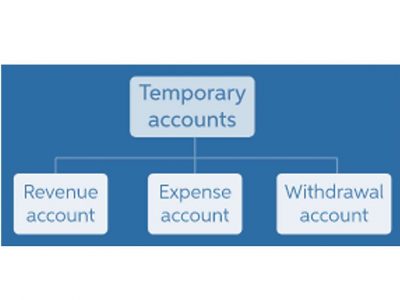Bond Premium Amortization Schedule Example

Suppose, for example, a business issued 10% 2-year bonds payable with a par value of 250,000 and semi-annual payments, in return for cash of 241,337 representing a market rate of 12%. Suppose, for example, a business issued 10% 2-year bonds payable with a par value of 250,000 and semi-annual payments, in return for cash of 259,075 representing a market rate of 8%. How to use the straight-line methodCalculating bond premium amortization using the straight-line method couldn’t be simpler. First, calculate the bond premium by subtracting the face value of the bond from what you paid for it. Then, figure out how many months are left before the bond matures and divide the bond premium by the number of months remaining.

Understanding an Amortizable Bond Premium
At the end of the 3rd year, the $15,000 bond discount will be become zero ($15,000 – $5,000 – $5,000 – $5,000) and the carrying value of the bonds payable will equal $500,000 ($500,000 – $0). In this case, the carrying value of the bonds payable on the balance sheet will equal bonds payable minus the bond discount. If a muni bond is held to maturity, the premium is all amortized away, so there’s no need to calculate the amortization for capital-gain reporting. Journal entries usually dated the last day of the accounting period to bring the balance sheet and income statement up to date on the accrual basis of accounting. This account is a non-operating or “other” expense for the cost of borrowed money or other credit. The bond’s life of 5 years is multiplied by 2 to arrive at 10 semiannual periods.
- For callable premium bonds (where the coupon rate is higher than the yield), the stated yield usually assumes the bond will be redeemed at the call date rather than maturity, resulting in a lower yield.
- If you want to go deeper, our guide on how to analyze financial statements helps connect these dots to the bigger financial picture.
- This means that the corporation will be required to make semiannual interest payments of $4,500 ($100,000 x 9% x 6/12).
- The primary advantage of premium bond amortization is that it is a tax deduction in the current tax year.
- A bond premium is an additional cost an investor pays when buying a bond that exceeds its face value.
Comparing the Two Amortization Methods

Determine the yield to maturity (YTM) or effective interest rate of the bond at the time of purchase. This yield is crucial since it forms the foundation for calculating annual amortization of the premium.2. Multiply the bond’s adjusted basis by how to calculate premium amortization the YTM, and then subtract the coupon interest payment to find the amortization amount for each period.3.

Amortization Schedule Example
Understanding how bond discounts are amortized is crucial for accurate financial reporting and compliance. Likewise, the bond discount in this journal entry is the difference between the cash we receive and payroll the face value of the bond we issue. And the normal balance of the bond discount is on the debit side as it is a contra account to the bonds payable. The initial journal entry to record the issuance of the bonds, and the final journal entry to record repayment at maturity would be identical to those demonstrated for the straight-line method.
Summary of the Effect of Market Interest Rates on a Bond’s Issue Price
In contrast, capitalized lease premiums Bookkeeping for Startups do not yield any immediate tax benefits but instead increase the asset’s cost basis, which can result in lower taxes when disposing of or selling the leased asset. Similarly, the amortization expenses for subsequent periods would be calculated in the same way. This process is repeated until all ten accrual periods have been evaluated.
- The decision to use either the constant yield method or ratable accrual method must be made at the time the bond is purchased.
- Amortized bonds differ from other types of loans and helping clients better understand bond amortization can further strengthen your role as a trusted advisor.
- Below is the total amortization schedule for our Series 2022 issue, illustrating how premium amortizes at the call date while the discount continues.
- In this case, the bond holder essentially assumes the same role as a bank lending a 30-year mortgage to a home buyer.
- Municipal bonds must be reported at their “yield to worst,” the lowest possible yield.

The premium amount represents the extra amount above par that the bondholder pays to receive higher interest payments. Over the life of the bond, this premium is gradually amortized (reduced), meaning it is spread out over the bond’s remaining life. An Amortized Bond Premium Calculator is a specialized financial tool for bond investors and accountants that focuses specifically on bonds purchased above their face value (par value). The constant yield method amortizes the bond premium by multiplying the purchase price by the yield to maturity at issuance and then subtracting the coupon interest.

- Under the straight-line method the interest expense remains at a constant amount even though the book value of the bond is increasing.
- If the bond is purchased at more than its maturity value, the yield to maturity includes the annual interest minus the loss as the bond decreases from the investment amount to the maturity value.
- Adhering to this method ensures consistency in calculating the bond premium amortization and provides a clear understanding of the tax implications.
- An investor who acquires a taxable bond with a premium must consider the premium amount as part of their cost basis for tax purposes.
- An existing bond’s market value will increase when the market interest rates decrease.
Pub 535 covers this topic–180 month amortization of Sect 197intangibles.The… The Investinginbonds.com web site allows you to see a history of trades… It would be more precise to say it computes the amortization based on the pay… When the loan is to be repaid in equal installment, it is also referred to as Straight-line amortization.
